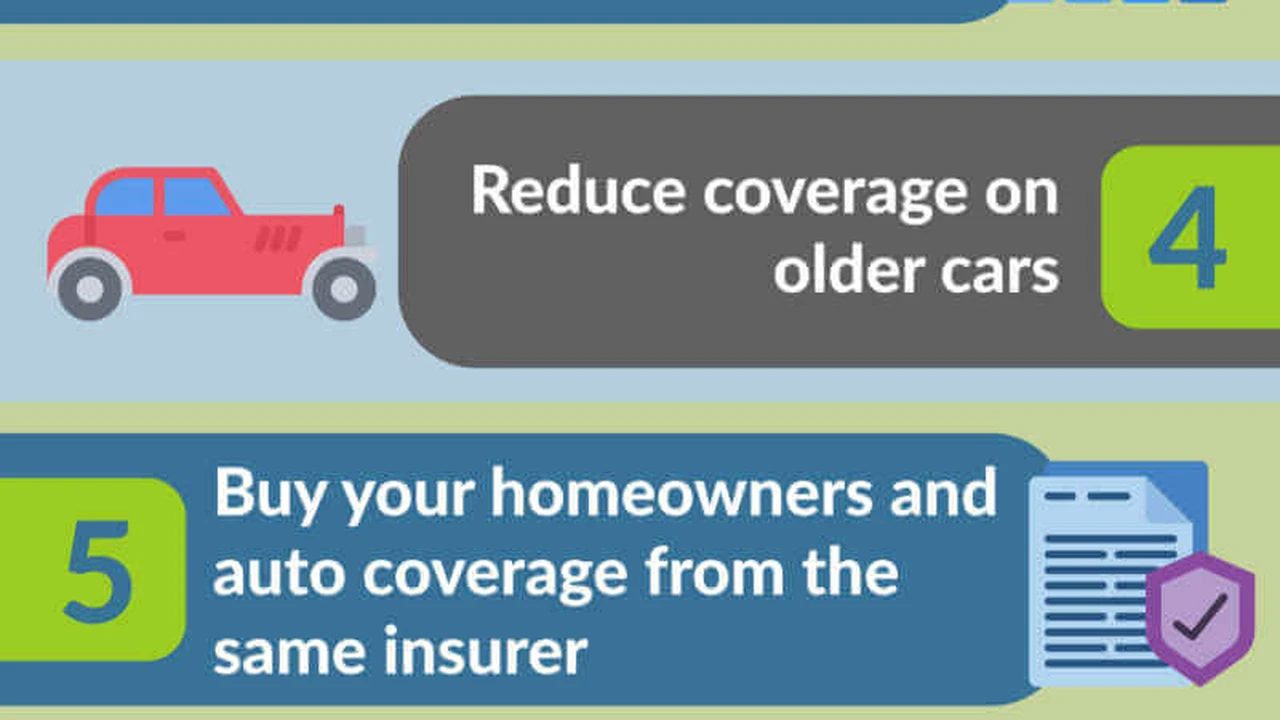10 Ways to Lower Your Car Insurance Costs

Understanding Your Car Insurance Policy and Premiums
Okay, let's dive right in. Car insurance. It's one of those things you HAVE to have, but nobody really *wants* to pay for it. It feels like throwing money into a black hole, right? But understanding what affects your premium is the first step in lowering those costs. Think of it like this: the insurance company is betting on how likely you are to file a claim. The riskier you are, the higher the premium. So, what makes you "risky"?
Factors include your driving record (obviously!), your age, your gender (statistically, young male drivers are more prone to accidents), the type of car you drive, where you live (urban areas tend to have higher rates), and even your credit score (in many states, a lower credit score translates to a higher premium). Knowing these factors allows you to target areas where you can make improvements.
1 Shop Around and Compare Car Insurance Quotes
This is the golden rule of saving money on car insurance! Don't just stick with the same company year after year out of habit. Insurance companies constantly adjust their rates and target different demographics. What was the best deal last year might be the worst deal this year. Get quotes from multiple companies – at least three, but ideally more like five or six. Use online comparison tools like:
- QuoteWizard: A good starting point to get a broad range of quotes quickly.
- The Zebra: Provides a more detailed comparison, including user reviews and ratings of different insurers.
- NerdWallet: Offers comprehensive guides and resources, plus a quote comparison tool.
When comparing, make sure you're comparing apples to apples. Same coverage levels, same deductibles. Otherwise, the lowest price might not actually be the best deal.
2 Increase Your Car Insurance Deductible for Lower Monthly Premiums
Your deductible is the amount you pay out-of-pocket before your insurance kicks in. A higher deductible means you're taking on more of the financial risk, and in return, the insurance company rewards you with a lower premium. It's a balancing act, though. You need to be comfortable with the deductible amount. Could you realistically afford to pay that amount if you had an accident tomorrow? If not, a higher deductible might not be the right choice.
Consider this: If you currently have a $500 deductible, try getting quotes with a $1000 deductible. See how much the premium drops. If the difference is significant, and you can comfortably afford the higher deductible, it's a smart move. For example, switching from a $500 deductible to a $1000 deductible could save you $50-$200 per year, depending on your situation. That adds up!
3 Take Advantage of Car Insurance Discounts
Discounts, discounts, discounts! Insurance companies offer a ton of them. The key is knowing what's available and asking for them. Here are some common discounts to look for:
- Good Driver Discount: Clean driving record? You should definitely be getting this.
- Multi-Policy Discount: Bundle your car insurance with your home or renters insurance for a significant discount. Companies like State Farm and Allstate are well-known for bundling options.
- Multi-Car Discount: Insuring multiple vehicles with the same company can save you money.
- Low Mileage Discount: If you don't drive much, you might qualify for a low mileage discount. Many companies now offer programs that track your mileage using a device or app. Progressive's Snapshot program is a good example.
- Student Discount: Good grades can actually save you money on car insurance!
- Affiliation Discounts: Some companies offer discounts to members of certain organizations or alumni associations. Check with your alma mater or professional organizations.
- Safety Feature Discounts: Cars with anti-lock brakes, airbags, and other safety features often qualify for discounts.
- Anti-Theft Device Discount: Having an alarm system or a vehicle recovery system like LoJack can lower your premium.
Don't be afraid to ask your insurance agent about all the available discounts. They might not volunteer them unless you ask!
4 Improve Your Credit Score to Reduce Car Insurance Costs
As mentioned earlier, in many states, your credit score plays a role in determining your car insurance premium. A lower credit score indicates a higher risk of filing a claim (according to insurance companies, anyway). Improving your credit score can take time, but it's worth the effort. Here's how:
- Pay your bills on time: This is the most important factor in your credit score.
- Keep your credit utilization low: Don't max out your credit cards. Ideally, keep your balances below 30% of your credit limit.
- Check your credit report for errors: Dispute any inaccuracies you find. You can get a free credit report from each of the three major credit bureaus (Equifax, Experian, and TransUnion) once a year at AnnualCreditReport.com.
While improving your credit score is a long-term strategy, the savings on car insurance (and other things like loans and mortgages) can be substantial.
5 Re-evaluate Your Car Insurance Coverage Needs
Do you really need full coverage on that old clunker? Full coverage (collision and comprehensive) protects you against damage to your own vehicle, regardless of who's at fault. If your car is older and not worth much, the cost of full coverage might outweigh the benefits. Consider dropping collision and comprehensive coverage if your car's value is low.
Use online valuation tools like Kelley Blue Book (KBB) or Edmunds to determine your car's current market value. If the cost of full coverage is more than 10% of your car's value, it might be time to reconsider. Also, think about your liability coverage. Are your current limits high enough to protect your assets if you're involved in a serious accident? Underinsured motorists coverage is also something to consider, especially if you live in a state with a lot of uninsured drivers.
6 Consider Usage-Based Car Insurance Programs
Usage-based insurance (UBI) programs track your driving habits and adjust your premium accordingly. These programs can be a great option for safe drivers. They typically use a device plugged into your car or a mobile app to monitor things like:
- Speed: Excessive speeding will raise your premium.
- Hard braking: Frequent hard braking indicates aggressive driving.
- Mileage: Driving fewer miles can lower your premium.
- Time of day: Driving during high-risk hours (e.g., late at night) can increase your premium.
Some popular UBI programs include:
- Progressive Snapshot: One of the most well-known UBI programs.
- Allstate Drivewise: Offers discounts for safe driving habits.
- State Farm Drive Safe & Save: Provides personalized feedback and potential savings.
Be aware that UBI programs can also increase your premium if you exhibit risky driving habits. Read the terms and conditions carefully before signing up.
7 Choose the Right Car for Lower Insurance Premiums
The type of car you drive significantly impacts your insurance premium. Expensive cars, sports cars, and cars that are frequently stolen tend to have higher insurance rates. Safer cars, like SUVs and minivans, often have lower rates. Before buying a new car, get insurance quotes for different models to see how they compare. Websites like the Insurance Institute for Highway Safety (IIHS) and the National Highway Traffic Safety Administration (NHTSA) provide safety ratings and information that can help you choose a safer, more affordable vehicle.
For example, a Honda CR-V or a Toyota RAV4 is generally cheaper to insure than a sports car like a Mazda MX-5 Miata. Even the color of your car *might* affect insurance rates, although this is more of an urban legend than a hard and fast rule. Stick to practical, safe vehicles for lower insurance costs.
8 Pay Your Car Insurance Bill in Full to Get a Discount
Many insurance companies offer a discount if you pay your annual premium in full instead of making monthly payments. This eliminates the administrative costs associated with processing monthly payments. The savings can be significant, sometimes as much as 5-10%. If you have the cash available, paying in full is a simple way to save money.
For example, if your annual premium is $1200, a 5% discount would save you $60. That's like getting half a month of insurance for free!
9 Maintain Continuous Car Insurance Coverage
Letting your car insurance lapse, even for a short period, can raise your rates when you try to get coverage again. Insurance companies see gaps in coverage as a sign of higher risk. Even if you don't own a car, you can maintain continuous coverage by purchasing a non-owner policy. This type of policy provides liability coverage when you're driving someone else's car.
If you're moving to a new state, make sure to get car insurance coverage in your new state before your old policy expires. This will ensure continuous coverage and prevent your rates from increasing.
10 Review and Adjust Your Car Insurance Policy Annually
Your insurance needs change over time. As you get older, your driving habits might change. You might buy a new car, move to a new location, or experience changes in your financial situation. Review your car insurance policy annually to make sure it still meets your needs. Adjust your coverage levels, deductibles, and discounts as necessary. This will help you ensure that you're getting the best possible rate and that you have adequate protection in case of an accident.
Set a reminder on your calendar to review your policy each year. Take the time to shop around and compare quotes from different companies. You might be surprised at how much you can save by simply being proactive.
:max_bytes(150000):strip_icc()/277019-baked-pork-chops-with-cream-of-mushroom-soup-DDMFS-beauty-4x3-BG-7505-5762b731cf30447d9cbbbbbf387beafa.jpg)






